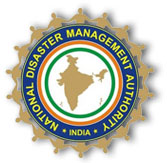Disaster Risk Reduction (DRR) 18/06/2019 – Posted in: Press Information Bureau
Disaster Risk Reduction (DRR)
(Ministry of Home Affairs)
WHAT
The National Disaster Management Authority (NDMA) met a 25-member delegation from the Gambia today.
NDMA made a presentation on the global trends in disasters, the institutional mechanism for Disaster Risk Reduction in India and the functioning of the Authority.
DISASTER RISK REDUCTION (DRR)
Disaster risk reduction is the concept and practice of reducing disaster risks through systematic efforts to analyze and reduce the causal factors of disasters.
- DRR aims to reduce the damage caused by natural hazards like earthquakes, floods, droughts, and cyclones, through an ethic of prevention.
- Disaster risk reduction includes disciplines like disaster management, disaster mitigation, and disaster preparedness.
- DRR is also part of sustainable development.
SENDAI FRAMEWORK
The Sendai Framework for Disaster Risk Reduction 2015-2030 (Sendai Framework) is the first major agreement of the post-2015 development agenda, with seven targets and four priorities for action.
The Sendai Framework is a 15-year, voluntary, non-binding agreement that recognizes that the State has the primary role to reduce disaster risk but that responsibility should be shared with other stakeholders including local government, the private sector, and other stakeholders.
SEVEN GLOBAL TARGETS
(a) Substantially reduce global disaster mortality by 2030, aiming to lower average per 100,000 global mortality rate in the decade 2020-2030 compared to the period 2005-2015.
(b) Substantially reduce the number of affected people globally by 2030, aiming to lower the average global figure per 100,000 in the decade 2020 -2030 compared to the period 2005-2015.
(c) Reduce direct disaster economic loss in relation to the global gross domestic product (GDP) by 2030.
(d) Substantially reduce disaster damage to critical infrastructure and disruption of basic services, among them health and educational facilities, including through developing their resilience by 2030.
(e) Substantially increase the number of countries with national and local disaster risk reduction strategies by 2020.
(f) Substantially enhance international cooperation in developing countries through adequate and sustainable support to complement their national actions for implementation of this Framework by 2030.
(g) Substantially increase the availability of and access to multi-hazard early warning systems and disaster risk information and assessments to the people by 2030.
NATIONAL DISASTER MANAGEMENT AUTHORITY
On 23 December 2005, the Government of India enacted the Disaster Management Act, which envisaged the creation of the National Disaster Management Authority (NDMA), headed by the Prime Minister, and State Disaster Management Authorities (SDMAs) headed by respective Chief Ministers, to spearhead and implement a holistic and integrated approach to Disaster Management in India.
FUNCTIONS & RESPONSIBILITIES OF NDMA
- Lay down policies on disaster management.
- Approve the National Plan.
- Approve plans prepared by the Ministries or Departments of the Government of India in accordance with the National Plan.
- Lay down guidelines to be followed by the State Authorities in drawing up the State Plan.
- Lay down guidelines to be followed by the different Ministries or Departments of the Government of India for the Purpose of integrating the measures for prevention of disaster or the mitigation of its effects in their development plans and projects.
- Coordinate the enforcement and implementation of the policy and plans for disaster management.
- Recommend provision of funds for the purpose of mitigation.
- Provide such support to other countries affected by major disasters as may be determined by the Central Government.
- Take such other measures for the prevention of disaster, or the mitigation, or preparedness and capacity building for dealing with threatening disaster situations or disasters as it may consider necessary.
- Lay down broad policies and guidelines for the functioning of the National Institute of Disaster Management.
Source: PIB
You can follow us on LinkedIn and on Instagram (Diligent IAS) for more updates related to IAS Preparation/ Study Material, Subscribe to our Facebook Page and Youtube Channel- Diligent IAS
Also read more PIB Updates

